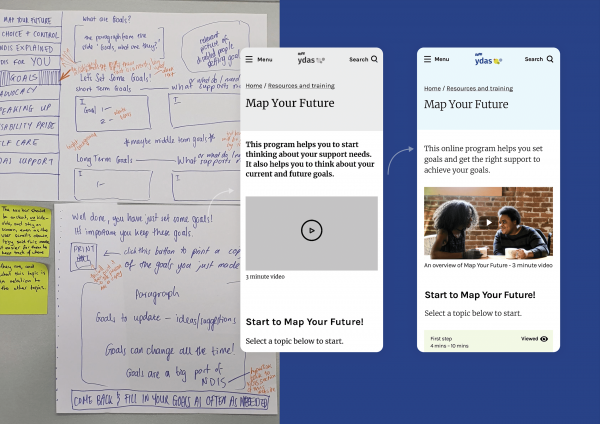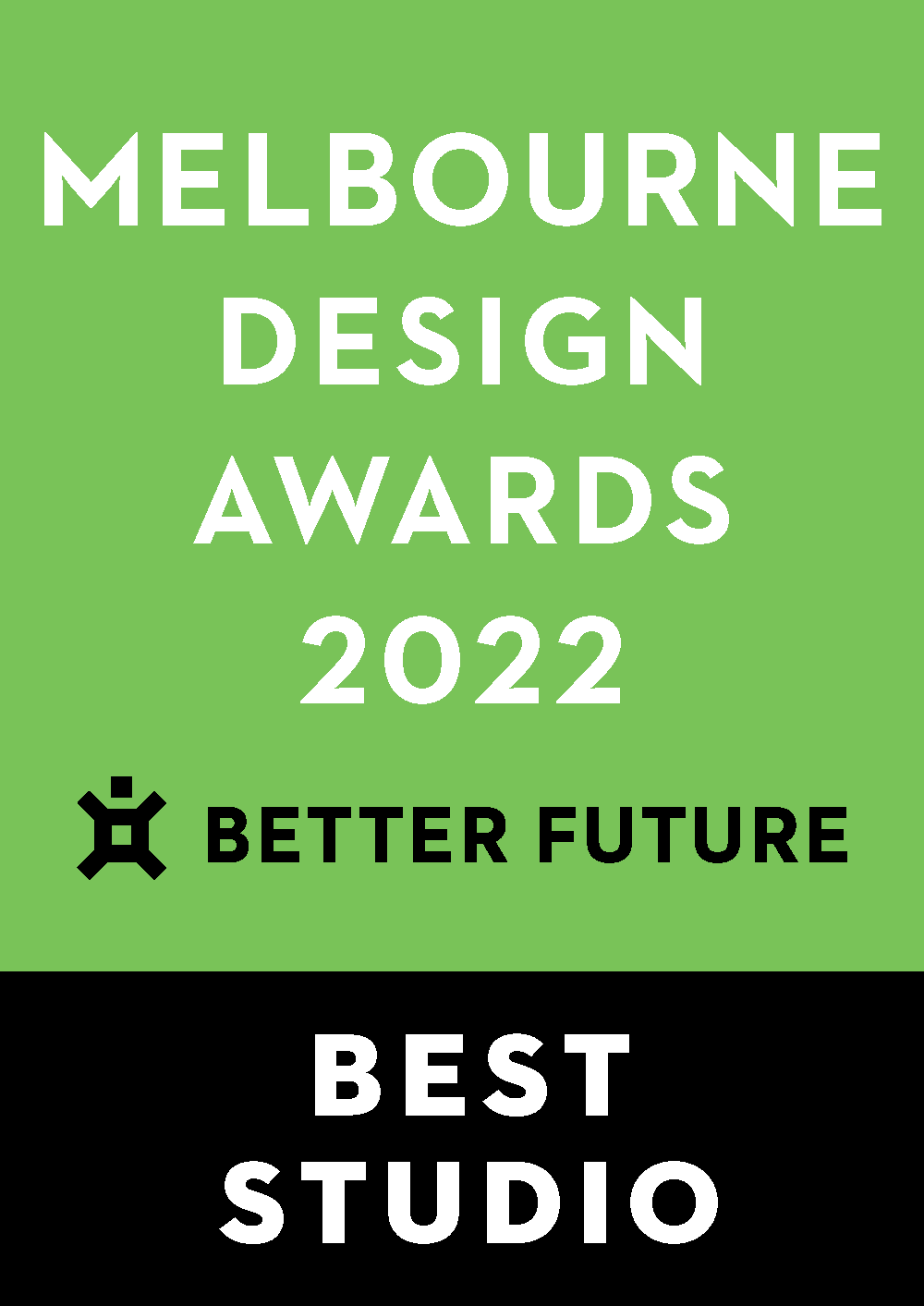




Image Credit : Illustrator: Niqui Toldi

Project Overview
Map Your Future is a co-designed free online program that enables young disabled people to set goals and get the right support to achieve them. Today and Youth Disability Advocacy Service (YDAS) worked together with young people to design a process that leads with the theme of disability pride.
Project Commissioner
Youth Disability Advocacy Service
Project Creator
Team
Simon Green, Beata Klepek, Beau Hankins, Liviana Baldino, Maria Nguyen, John Broadfoot
Project Brief
YDAS focus on supporting disabled young people who require individual advocacy. Their Map Your Future workshops are about helping disabled young people to be aware of goals that they might want to set—living their lives, setting themselves up to leave school and live independently—but within the context of it being accessible.
Originally a powerpoint presented in-person to young people in schools, our challenge was to create the online version of these workshops—something that their young audience could do independently at home, emulating the experience of someone supporting you through it when you need it.
“Co-design was important for the online adaptation because we needed to understand what young people were doing online and how they were consuming information. The process was about bringing young disabled people in from the very, very start, as soon as we could.”—Simon Green, YDAS
“We know that young people are using the tool, and some of them have told us that they’re using it with their parents, or there are parents sending in emails to tell us how much it’s been beneficial, particularly the section on disability pride.”—Simon Green, YDAS
Project Innovation/Need
The entire project was driven by co-designing with disabled young people: from preliminary paper sketches detailing what the tool could look like, through to testing ideas, digital prototypes and iterative site design and build.
It was important to make sure people’s needs were met. We were conscious of the broad range of disabilities young people are living with and the intentional simplicity of the final design reflects this.
The result means young people can map their future in their own time, own space, at their own pace.
The simplicity of the design is intentional and crucially important for accessibility. We tested the format and design with young people to ensure it worked for them and was compatible with the technology they use to access online tools such as dictation and screen readers.
At the end of each section of the program, people are urged to either email their answers to themselves or print them. There are multiple reasons for this intentional design. We wanted:
- to avoid exporting the work as a PDF, as PDFs are not great for accessibility.
- people to be able to ‘save’ their work when they were done but wanted to ensure that there was a low barrier to entry, which is why there are no passwords or usernames required to access the program.
- people to be able to show their answers to their family and at their NDIS meetings.
Design Challenge
YDAS ran preliminary workshops with the young audience and had them sketch out on paper what they imagined this online tool would look like and what they thought was important to be included.
We took these learnings and translated them into a digital version that would work across any device. We then ran workshops to test the ideas with people to make sure their needs were met.
“It was really important that the first step happened as early as possible, so we didn’t have any heavy preconceived notions of the site. Young people influenced the site first, then we designed based on what they said, in combination with our expertise as youth and disability workers and Today’s expertise in building functional and accessible sites.”—Simon Green, YDAS
"It was a beautifully collaborative environment."—Beata Klepek, Today
Future Impact
Map Your Future is live and thriving. It promotes asking ‘What would you like to do?’ over ‘What can’t you do?’
“Making the website has evolved the whole physical space workshop and has given us many more ways to engage through different formats... A parent, carer or teacher can now sit down and do this with their young person. Whereas before, we had to deliver it as a workshop, we needed our expertise. But we’ve done a really good job of translating that expertise onto the site, which means that more people can do it.”—Simon Green, YDAS
The purpose behind our co-design process was to ensure disabled young people have access to an accessible tool that helps them advocate for themselves.
The pandemic has changed the way people interact with each other, their environment and with businesses and services. Isolating with and from illness can be very challenging for disabled young people.
The end result of the program is something that disabled young people can take to their NDIS meetings to help them express what they need. When we spoke with NDIS planners, they were incredibly enthusiastic about how this program will help them assist young people.
Systems - Social Design
Social design applies a design methodology and intervention to tighten the social fabric that holds us together. Addressing issues of social inequality, such as poverty or social isolation, social design is the pathway to a more just and sustainable society.
All systems are designed to serve a purpose – and that purpose is to serve people. Systems design optimises systems performance by systematically focusing on the human component - human capacities, abilities, limitations and aspirations.
More Details


